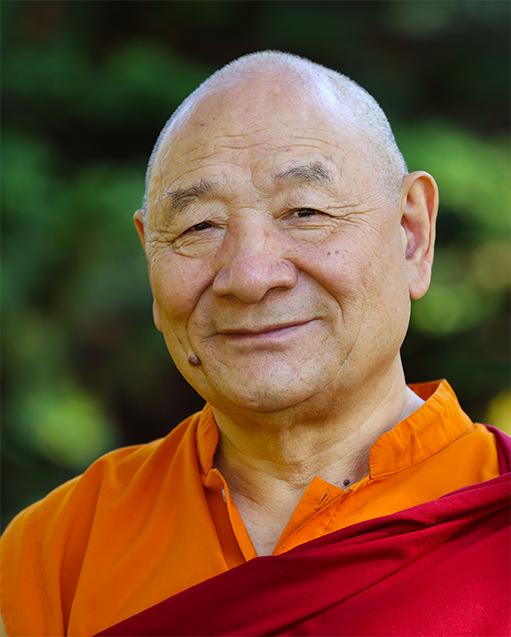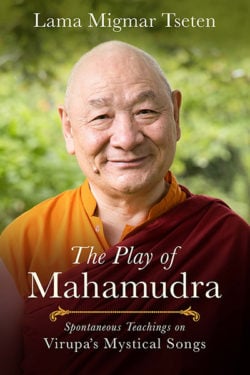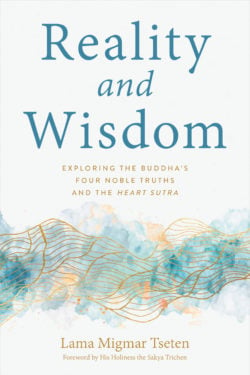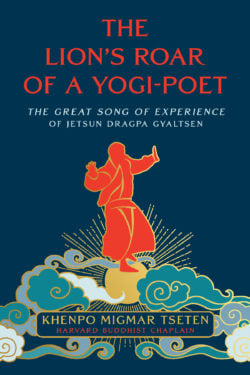Khenpo Migmar Tseten

Khenpo Migmar Tseten has served as Buddhist chaplain at Harvard University since 1997. He received both a traditional and a contemporary education in India, graduating from the Central Institute of Higher Tibetan Studies at Sanskrit University in Varanasi. He served as the head of the Sakya Center in Rajpur, India, and the Sakya Monastery in Puruwalla. Lama Migmar has supervised the editing and publication of more than fifty rare volumes of Sakya literature and is the author of many books, including Awakening to the Noble Truth, Wisdom Gone Beyond, The Tibetan Book of Awakening, Play of Mahamudra, and Reality and Wisdom. As the founder of the Sakya Institute for Buddhist Studies in Cambridge, Massachusetts, Lama Migmar leads retreats throughout North America and Europe.
Books, Courses & Podcasts
The Play of Mahamudra
“This new collected edition of Khenpo Migmar Tseten’s Play of Mahamudra volumes constitutes a veritable treasure for all who are deeply engaged on the path to enlightenment. Khenpo Migmar’s translation of Mahasiddha Virupa’s Treasury of Dohas and of Sachen Kunga Nyingpo’s Praise to Virupa makes us intimately familiar with the essence of these root texts, and his elucidation of the Dohas offers us a deep and clear understanding of their core meaning. Anyone who truly contemplates on Mahasiddha Virupa’s words is certain to attain realization.”
—His Holiness the Sakya Trichen
In this collection, renowned Tibetan Buddhist teacher Lama Migmar Tseten provides essential commentary on the mystical songs of the Indian Buddhist rebel-saint Virupa. One of the most celebrated tantric masters of Buddhist India, Virupa’s songs describe his realization of mahamudra, the ultimate nature of reality. Intimate and highly engaging, The Play of Mahamudra unpacks these songs with meticulous clarity, making Virupa’s insights accessible to modern readers.
Reality and Wisdom
Written in a warm and accessible style by one of today’s most respected Tibetan Buddhist masters, Reality and Wisdom leads the reader on a journey of discovery beginning with the very first teachings of the Buddha and into the profound experience of emptiness.
The first section of the book explores the bedrock Buddhist teachings of the four noble truths—insights into freedom from suffering from craving—which underpin all schools of Buddhism. Lama Migmar presents and explores these foundational Buddhist truths with humor and insight, explaining how, from a Mahayana Buddhist perspective, these truths serve as crucial supports for cultivating the transformative wisdom of emptiness.
In the book’s second half, Lama Migmar illuminates the terse and enigmatic lines of the Heart Sutra, perhaps the most studied and revered of all Mahayana Buddhist scriptures. The Heart Sutra presents the reader with a vision of reality as it is perceived by a buddha, a vision underpinned by and infused with the radical flexibility and possibility of emptiness and the engagement and responsiveness of profound compassion.
The clarity, warmth, and vibrancy of Lama Migmar’s writing combined with the comprehensiveness and detail of his presentations of key Buddhist teachings make this book a valuable resource for a range of readers, from beginners to more advanced practitioners seeking to deepen their practice.
The Lion’s Roar of a Yogi-Poet
An exultant song of realization by one of Tibet’s greatest yogis, explained and elaborated upon by a beloved contemporary Tibetan teacher.
Jetsun Rinpoche Dragpa Gyaltsen (1147–1216)—revered as one of Tibet’s greatest yogis and one of the founding figures of the Sakya school of Tibetan Buddhism—composed his Great Song of Experience as a way to distill and communicate the essence of the Buddhist path to enlightenment. Shimmering with double meanings, seeming tautologies, and ribald references, Dragpa Gyaltsen’s verses resound with insights thrown out like bolts of lightning: “When mind itself is comprehended, that is Buddha; do not seek elsewhere for the Buddha!”
Beloved teacher Lama Migmar Tseten’s newly updated translation of Dragpa Gyaltsen’s Great Song brings these verses to life with a clarity and immediacy that belies the underlying challenge that these verses pose to our ordinary ways of thinking and being.
In his extensive verse-by-verse commentary, Lama Migmar unravels Dragpa Gyaltsen’s terse, enigmatic verses with clarity and humor, bringing Rinpoche’s ecstatic realization and pointed insights into conversation with twenty-first-century concerns, showing how the experiential teachings of a twelfth-century Tibetan yogi can help us understand and counteract the modern pressures of wanton consumerism, greed and inequality, isolation and loneliness, and environmental degradation. Lama Migmar’s insightful commentary opens the door to the radical vision presented by Dragpa Gyaltsen’s poetic teachings, showing us a view of the mind without center or limits, as bright as the sun, and clear and open as space.
In addition to Lama Migmar’s extensive verse-by-verse commentary, the book includes facing-page English and Tibetan editions of the root text of Great Song of Experience, and the laudatory poem Praise to Jetsun Rinpoche Dragpa Gyaltsen by Dragpa Gyaltsen’s nephew and student, the great Sakya Paṇḍita (1182–1251).



